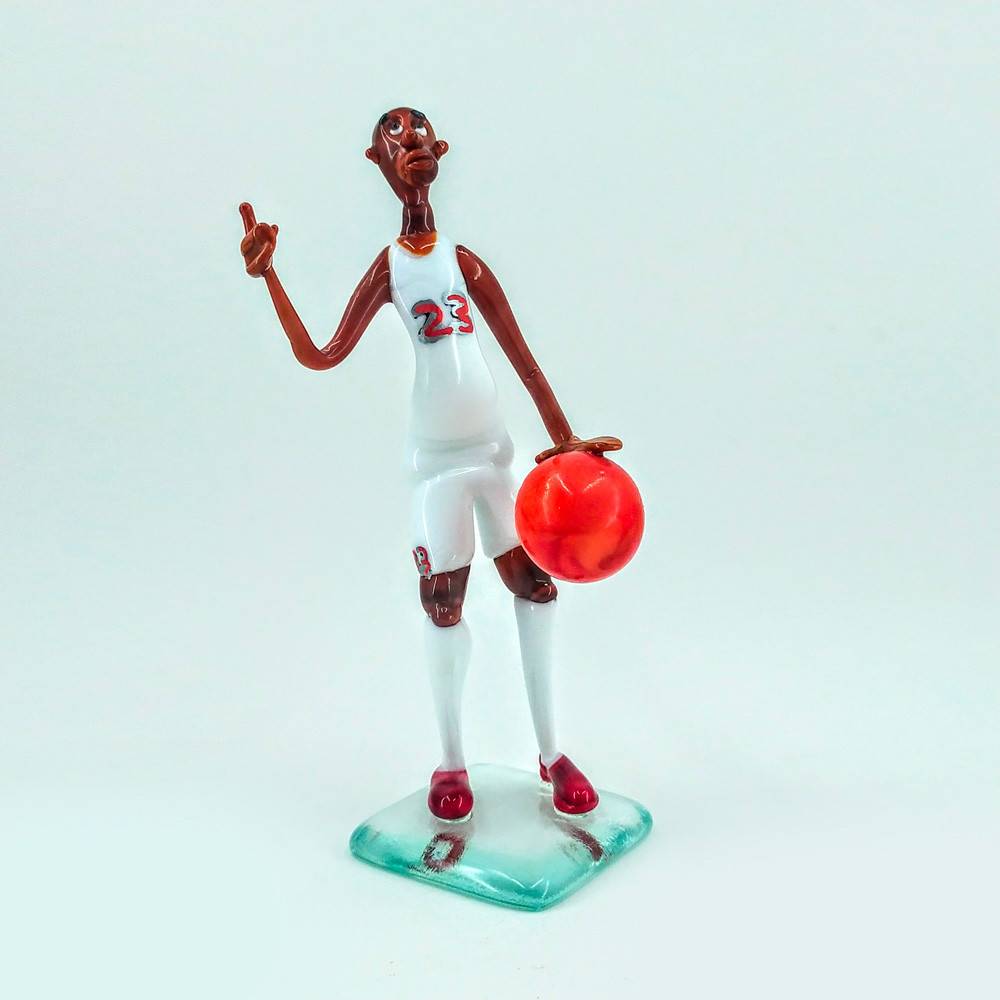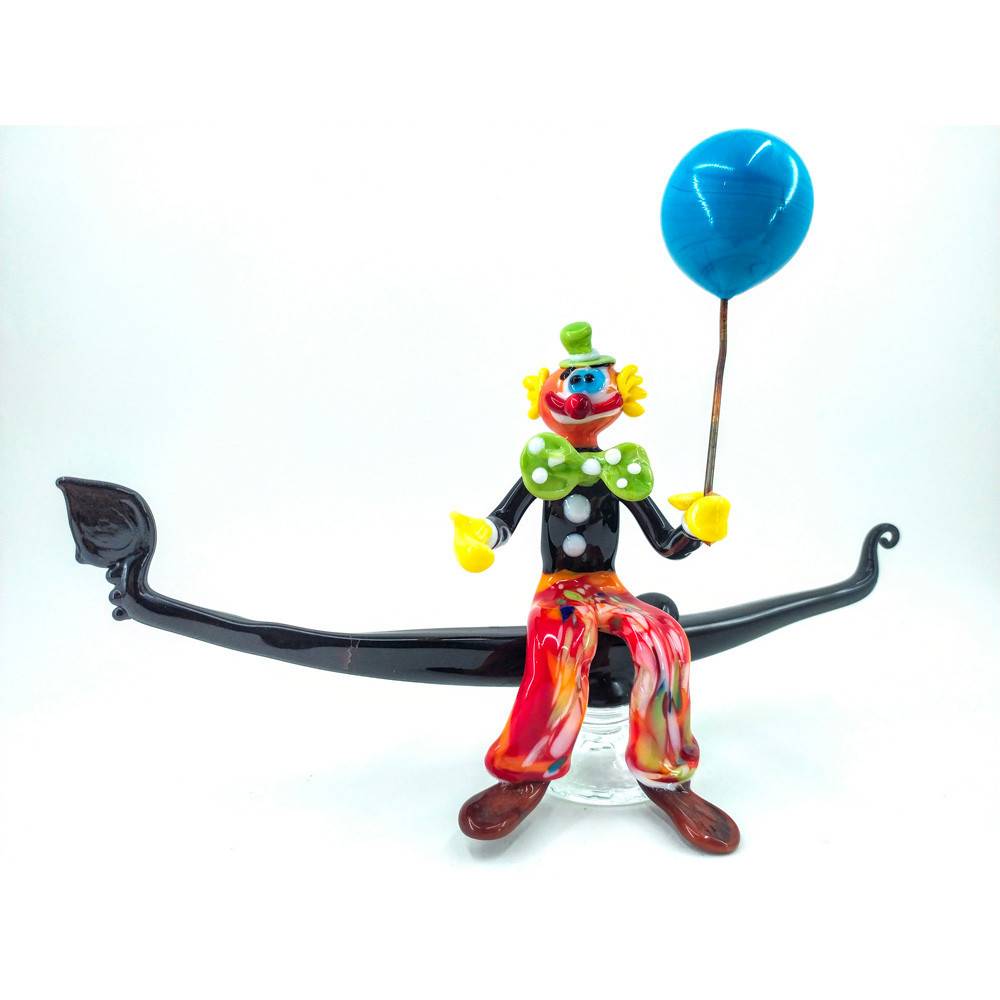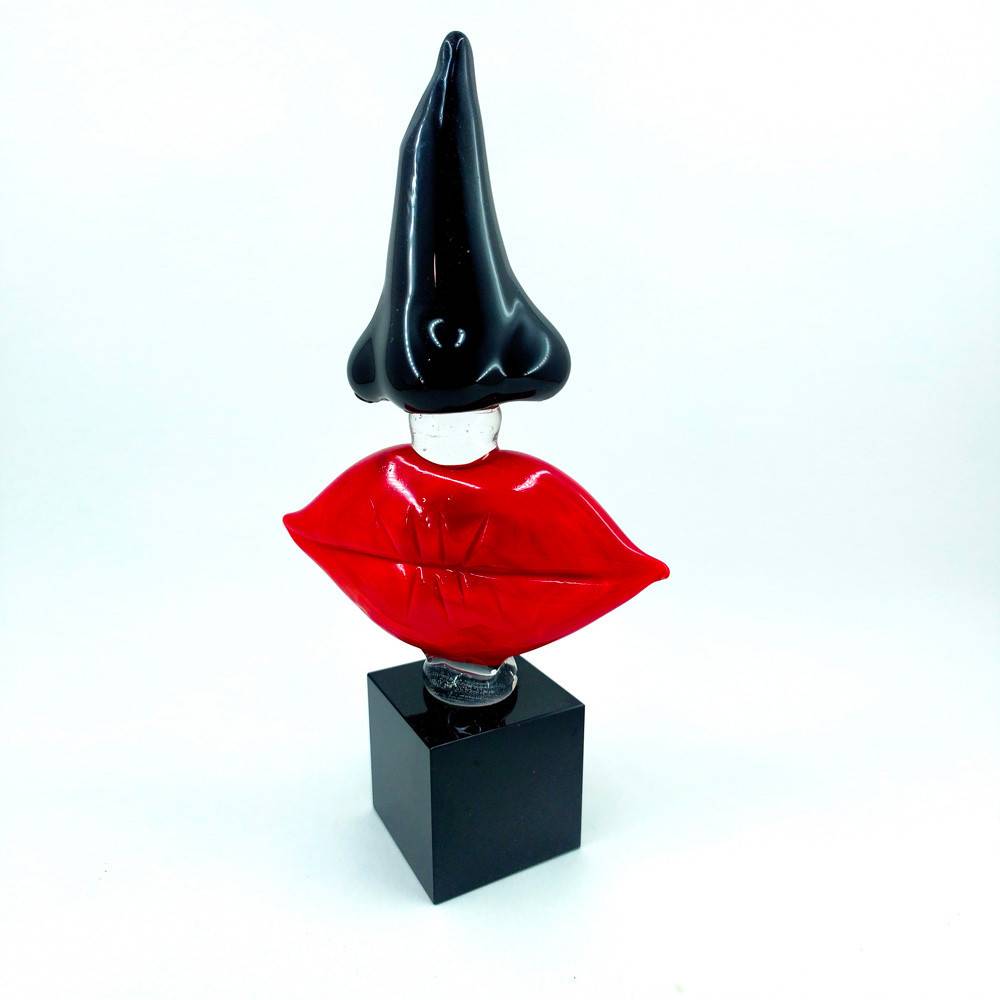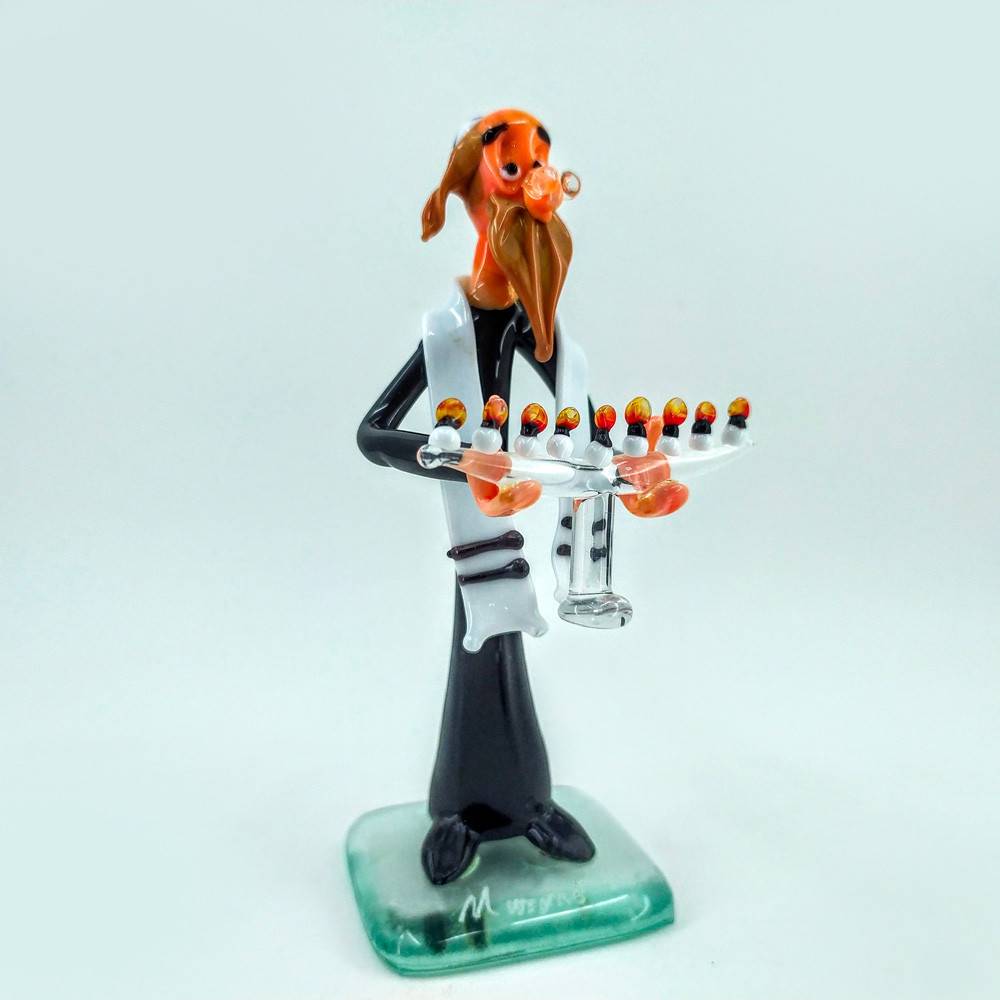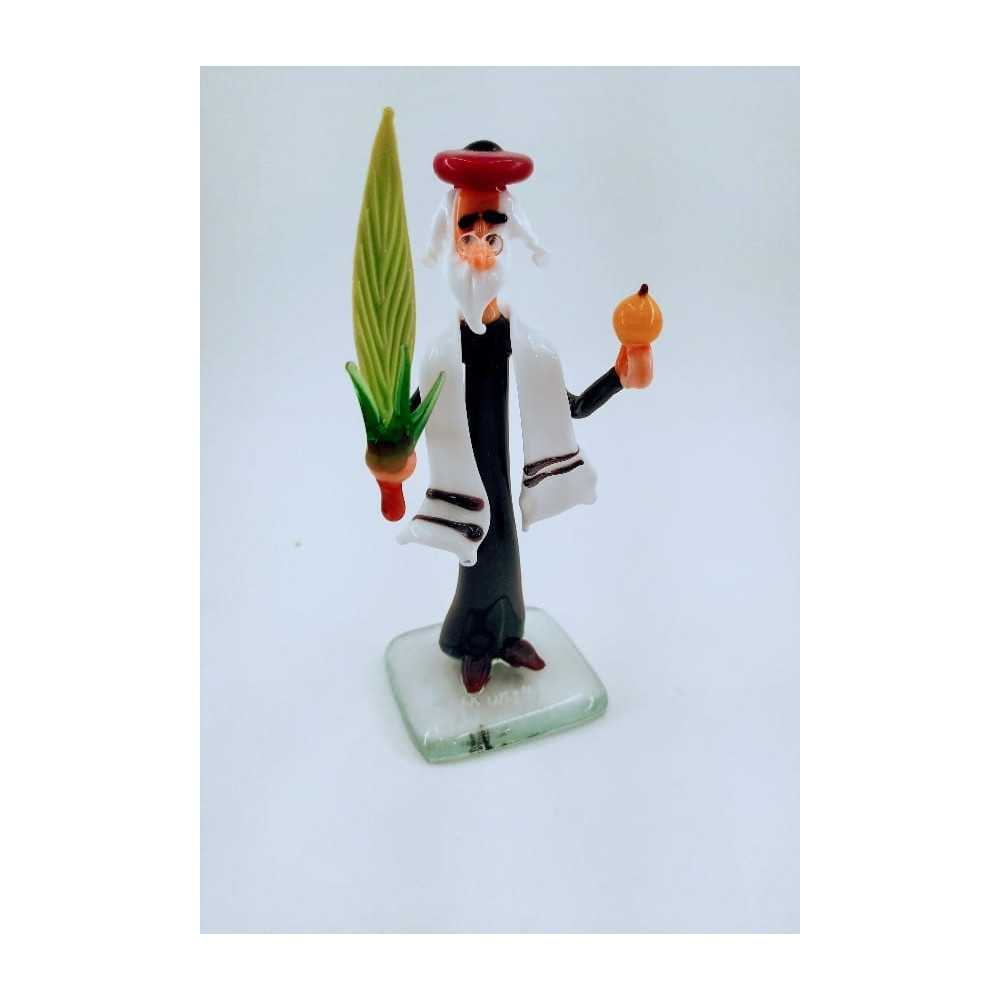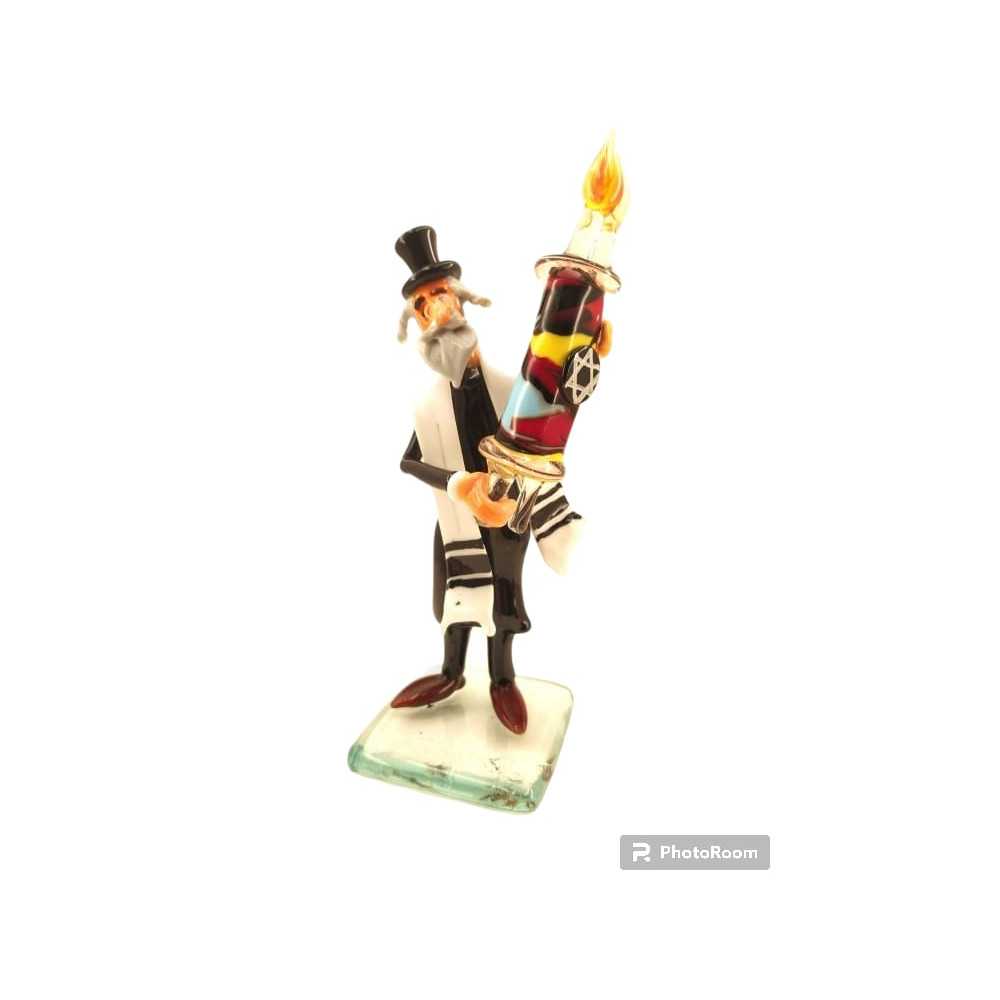Chances are, if you see a colorful rabbi crafted from Murano glass, it was meticulously sculpted by the talented Roberto Guidotti.
Born in Murano in 1967, Guidotti's passion for glassmaking blossomed in childhood. Captivated by the vibrant world of glass art, he honed his skills in traditional techniques and ultimately focused on lampworking—an ancient craft he has been perfecting for over thirty years. Lampworking, distinguished from traditional furnace techniques, is a solitary and intimate process. During this intricate operation, the craftsman is face-to-face with the glass, ideally connected through the flame of a torch, or blowpipe, which generates the necessary heat to manipulate the material.
This ancient method has evolved significantly over the centuries. Originally, a lamp powered by air from foot-operated bellows provided the flame, but today’s artists typically use a metal blowpipe connected to a propane or methane gas cylinder, often supplemented with oxygen to achieve higher temperatures. This evolution reflects both advancements in technology and the enduring artistry of lampworking. In his workshop located in Rio terà S. Salvador, Guidotti produces a stunning array of Murano glass items, including rings, pendants, necklaces, animals, angels, clowns, and other artistic compositions. However, it is his exquisite glass rabbis that truly stand out—serving as both artistic masterpieces and cultural symbols. Venice, with its rich Jewish history, provides important context for Guidotti’s work. During the Middle Ages, the city became a refuge for people of Ashkenazi, Levantine, and Sephardic ancestry fleeing persecution elsewhere in Europe. Although Venice was not a liberal society, it offered relative tolerance compared to other regions. The Venetian Ghetto, known as the world's first ghetto, became a center for Jewish life, enabling the community to practice their religion, celebrate their heritage, and participate in trade and scholarship. The rabbis made by Guidotti are not mere decorations; they are symbols of Venetian history, a republic open to multiple cultural, religious, artistic and political influences. Often depicted holding in their hands a Torah, the main symbol of Judaism, or a Lulav, a traditional palm frond, these glass figures are a tribute to Jewish tradition. Whether given as a loving thought or displayed as a treasured keepsake, Guidotti's Murano glass sculptures represent the resilience and vitality of Venice's cultural heritage, making them a meaningful addition to any collection.


